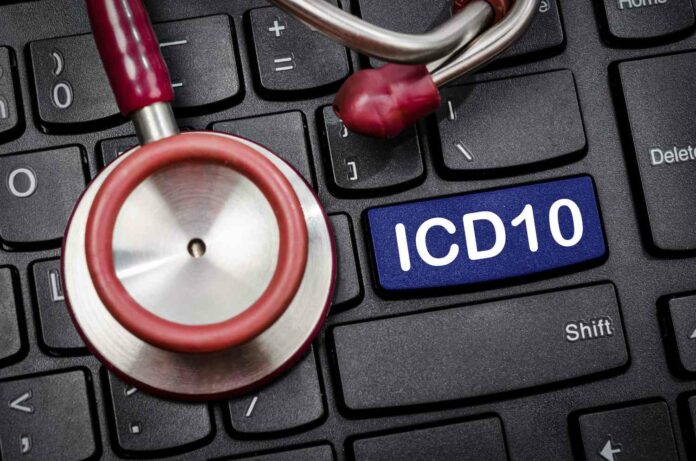Table of Contents
In the intricate tapestry of modern healthcare, one thread, in particular, has unassumingly secured its place as a linchpin in the maze of medical diagnostics and administrative processes. The International Statistical Classification of Diseases and Related Health Problems, more commonly called ICD, embodies a systematic nomenclature that standardizes the coding for numerous diseases, facilitating the storage and retrieval of diagnostic information. This critical element of healthcare infrastructure underwent a monumental change with the introduction of ICD-10, heralding a new era for diagnostic precision and administrative efficiency.
Unfolding the layers of ICD-10’s impact on the medical landscape reveals a story of triumphs, trials, and transformation. From enhancing the attribution of conditions to the intricate analysis of public health trends, ICD-10 has woven a narrative of meticulous accuracy and potent potential. For healthcare professionals, medical coders, and IT specialists, understanding the implications of ICD-10 is not merely prudent; it is pivotal to the core of their day-to-day roles.
The Evolution of Medical Coding
For decades, the healthcare industry relied on the ICD-9 coding system, which faced mounting constraints while groundbreaking in an era of burgeoning medical knowledge. The transition to ICD-10 marked a quantum leap in the trajectory of medical coding, expanding the number of diagnostic codes from around 14,000 to over 68,000. Beyond the numerical disparity, ICD-10 offered a granular taxonomy that ICD-9 couldn’t accommodate.
The expanded repertoire of codes within ICD-10 betokened an era of heightened specificity, enabling healthcare providers to pinpoint their diagnoses more accurately. This makes a more coherent reflection of patients’ health states and allocates the appropriate resources for treatment and care. The sheer volume and diversity of ICD-10 codes cater to the myriad manifestations and progressions of diseases, a testament to the comprehensive nature of its design.
The Infusion of Precision into Diagnoses
The benefits of ICD-10 are not merely theoretical or superfluous; they are deeply pragmatic and profoundly impactful. By drilling down to the minutiae of disease classification, ICD-10 empowers medical professionals with a finer lens to view and manage patient health. The critical aspect of coding under ICD-10 is the ability to document a comprehensive set of diagnoses that encapsulate the complexity and nuances of a patient’s health status, an area where ICD-9 often falls short.
This level of precision reverberates through the healthcare ecosystem, dictating the course of treatment, laying the foundation for informed research, and ensuring that policies are data-driven. Each code under ICD-10 delineates a unique narrative, contributing to a collective tapestry of public health trends and guiding governments and organizations in their strategic healthcare initiatives.
Multifaceted Benefits of ICD-10
The multifaceted utility of ICD-10 extends far beyond its role as a mere administrative tool. Its impact sprawls across various healthcare domains, engendering improvements in both the qualitative and financial realms.
Enhanced Disease Classification
ICD-10’s extensive code set allows for a more precise classification of diseases, pivotal in epidemiology, clinical research, and healthcare services. The refined coding captures subtler distinctions in diagnoses, thus avoiding the generic, ‘unspecified’ labels that marred the ICD-9 landscape. The ability to categorize diseases by severity, anatomical site, etiology, and other parameters fosters a nuanced understanding of morbidity patterns, which is essential for effective service delivery and resource allocation.
Improved Reimbursement Accuracy
The granularity of ICD-10 codes fosters a more accurate reflection of the complexities of patient encounters, which directly influences the reimbursable value of services rendered. Accurate coding under ICD-10 ensures that healthcare providers adequately compensate for the level and intensity of services provided. In contrast, outdated coding systems could misrepresent the resource utilization and the necessary level of care, leading to inadequate or excess reimbursements, which have profound financial implications.
Better Data Analysis and Reporting
Under ICD-10, data becomes a potent tool for informed decision-making. The wealth of detailed health information, codified according to ICD-10, is instrumental in generating reports that offer insights into healthcare trends, outcomes, and costs. These analyses inform quality improvement initiatives, enable benchmarking with national and international standards, and even underpin the identification of emerging health threats.
Overcoming Challenges and Adoption Hurdles
The transition to ICD-10 was not without its tribulations. The complexity and sheer volume of new codes necessitated comprehensive education and training for healthcare personnel and coders. Integrating ICD-10 into existing health information systems posed a technological challenge, and the initial learning curve translated into a lull in productivity as the industry grappled with the transition. Coding accuracy and speed, critical components of healthcare administrative tasks, initially saw a decline, prompting concerns about the practical viability of ICD-10.
However, the country steadily overcame these obstacles. Focus with perseverance and strategic interventions, training programs, updated software solutions, and collaborative knowledge-sharing platforms played instrumental roles in easing the transition. Today, the adaptation of ICD-10 is emblematic of the healthcare sector’s resilience and adaptive capacity, signaling a collective commitment to operational excellence and continual improvement.
Case Studies and Success Stories
The successful integration of ICD-10 can be best appreciated through the lens of individual institutions and practitioners. Case studies reveal how ICD-10 catalyzed transformational shifts within healthcare organizations. From more refined health analytics that exposed inefficiencies ripe for optimization to insights that led to the development of targeted, patient-centered care pathways, the success stories of ICD-10 adoption are veritable testaments to its efficacy.
In one such instance, an extensive regional hospital system reported a significant uptake in accurate clinical documentation under ICD-10, resulting in more informative patient records and a boost in coders’ productivity over time. The enhanced disease representation not only profoundly impacted reimbursement accuracy but also sharpened the institution’s ability to track and manage specific health concerns at a level of detail previously unattainable.
Future Trends and Innovations
The healthcare community anticipates the dawn of ICD-11, a revision that promises to align diagnostic coding more closely with advances in medical science and health management. The potential for even more detailed and agile classification is an exciting prospect with its own preparation and implementation challenges.
Technology, a relentless driver of change in the healthcare sector, is expected to play an even more pivotal role in the evolution of medical diagnosis. Artificial intelligence and machine learning stand poised to revolutionize the interpretation and application of diagnostic coding systems, automating and augmenting the precision and efficiency of healthcare operations.
Conclusion
The unveiling of ICD-10 has brought about a renaissance in medical diagnosis, bolstering the precision and efficacy of healthcare delivery. Its impact resonates with enhanced classification, superior reimbursement accuracy, and a robust foundation for data-driven decisions. The adoption challenges have been surmounted, and the industry stands poised on the brink of even more significant refinements in diagnostic capabilities.
For healthcare professionals, the message is clear—embrace ICD-10 not as an obligation but as an opportunity to excel. Continuous education, seamless technological integration, and an unwavering focus on quality will ensure that the promise of ICD-10 translates into tangible, enduring benefits for patients and providers alike.
In the grand narrative of healthcare, ICD-10 is more than an acronym; it symbolizes the industry’s commitment to progress, a testament to the potential of meticulous coding, and a barometer for the standards we aspire to. The thread it weaves into the healthcare fabric is strong, resilient, and intricately detailed, painting a picture of a future where every diagnosis counts and every patient’s story is told with the utmost accuracy and care.





